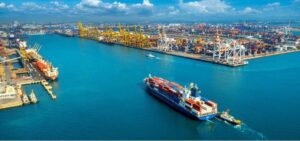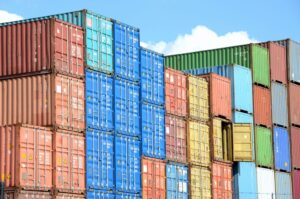The Lok Sabha’s Bills of Lading, 2025, modernises India’s maritime laws, introducing e-BLs for efficiency. This shift, aligning with global trends, promises reduced paperwork, enhanced security, and streamlined trade.

e-BL revolutionizes India’s maritime trade, boosting efficiency and global competitiveness
As Kale Logistics Solutions consistently provides informative articles, this piece, penned by Umesh Kurlekar, Senior Consultant, Maritime and Port IT Strategy, delves into the pivotal role of the e-Bill of Lading.
Legal overhaul
In a landmark decision, the Indian government has enacted the Bills of Lading Bill, 2025, effectively replacing the antiquated Indian Bills of Lading Act of 1856. This legislative stride aims to bring India’s maritime legal framework in line with contemporary global standards, thereby enhancing the efficiency and security of international trade. This move signifies India’s commitment to modernizing its trade infrastructure and solidifying its position in the global market.
Document defined
But first, what exactly is a bill of lading? It is an indispensable document in the shipping and logistics sector, serving a triple purpose: a receipt for goods, a document of title, and a contract between the shipper and the carrier. Issued by a carrier, it details the type, quantity, and destination of shipped goods. This document is pivotal for executing international trade transactions, facilitating ownership transfer, and ensuring shipping agreement fulfilment. It is also crucial for customs clearance and dispute resolution.
Digital transformation
The new legislation’s significance lies in its introduction of the electronic Bill of Lading (e-BL) framework, designed to address traditional challenges through digitisation. The adoption of e-BLs promises to drastically reduce paperwork, lower operational costs, and bolster transaction security and speed. By leveraging technologies like blockchain, the e-BL ensures enhanced transparency and traceability, mitigating fraud and disputes. This digital shift aligns India with the global trend towards digital trade solutions. This is not only about modernisation but also sustainability, reducing paper waste, and fostering a greener trade ecosystem.
Economic impact
Furthermore, the bill is expected to significantly enhance India’s trade efficiency and competitiveness by simplifying customs clearance and streamlining trade flows. The reduction in processing times and the increased reliability of shipping documents can lead to substantial cost savings for businesses, fostering a more dynamic trading environment. The implementation of this bill is a crucial step towards aligning India’s trade practices with international norms, reinforcing the government’s dedication to a digital economy. This will directly improve India’s ease of doing business rankings, attracting further investment.
Future growth
In summary, this legislation is poised to transform India’s shipping sector by embracing digitalisation, ensuring efficiency, transparency, and security in trade processes, and positioning the nation for future growth in global trade. The adoption of e-BLs will be a game-changer for the entire logistics ecosystem, facilitating large-scale automation, enhancing transparency, enabling end-to-end stakeholder communication, and mitigating security risks, ultimately fostering a more resilient and efficient trade environment.











